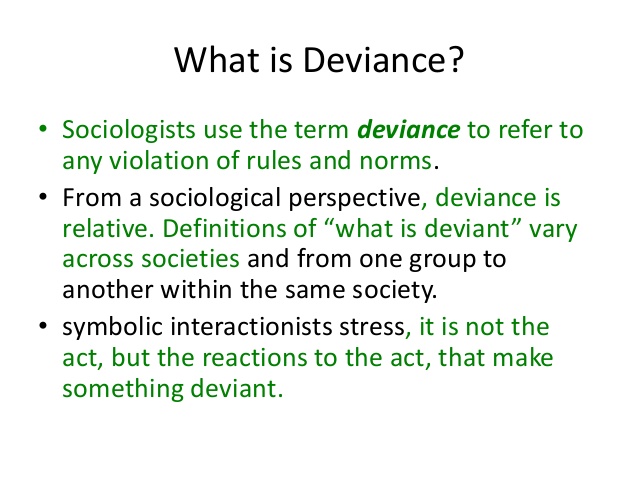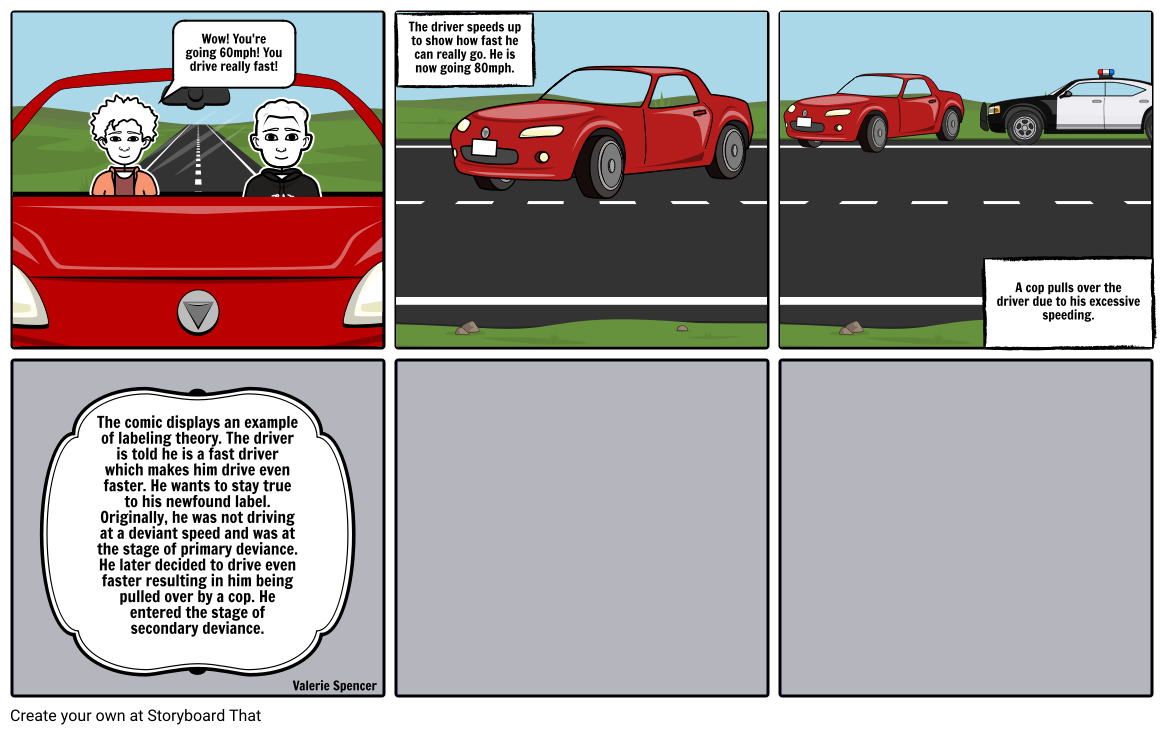Have you ever found yourself questioning why certain behaviors are considered wrong, while others are accepted without a second thought? Have you wondered how societies define what’s “normal” and what’s considered “deviant”? The concept of deviance in sociology dives deep into these questions, exploring the fascinating and ever-evolving landscape of social norms.

Image: rhssociology.weebly.com
Deviance, in its simplest form, refers to any act or behavior that violates social norms, expectations, and values within a particular group or society. It’s a broad concept that encompasses everything from breaking minor social rules like cutting in line to committing serious crimes like murder. Understanding what constitutes deviance is crucial because it helps us navigate the complexities of social interactions, group dynamics, and even how we define ourselves.
Delving Deeper: Unraveling the Layers of Deviance
The concept of deviance has a rich history, its roots intertwining with the philosophical and sociological advancements throughout the centuries. Early thinkers like Emile Durkheim and Robert Merton contributed significantly to the understanding of deviance as a natural phenomenon in every society. Durkheim proposed that deviance plays a crucial role in reinforcing social cohesion by defining boundaries and solidifying collective values. Merton, on the other hand, introduced the concept of “anomie,” which suggests that social strain and inequality can lead to deviance when individuals struggle to achieve societal goals through legitimate means.
The Ever-shifting Landscape: Exploring the Relativity of Deviance
A crucial aspect of deviance is its relativity. What’s considered deviant in one society, time period, or social group might be perfectly acceptable in another. For instance, wearing a bikini to the beach is considered normal in many Western countries, but it would be deemed inappropriate in some more conservative cultures. This relativity highlights the dynamic nature of social norms and their susceptibility to cultural influences, historical contexts, and individual interpretations.
Types of Deviance: A Spectrum of Behaviors
Deviance isn’t a monolithic concept. It exists on a spectrum, encompassing various categories and degrees of severity. Broadly, we can differentiate between formal and informal deviance:
- Formal Deviance: This refers to violations of codified laws and rules enforced by official institutions like the police or government, resulting in legal consequences. Examples include crimes like theft, assault, or drug trafficking.
- Informal Deviance: This encompasses acts that violate unwritten social norms and expectations, often leading to informal sanctions like disapproval, gossip, or social ostracization. Examples include wearing inappropriate clothing for a specific occasion, talking loudly in a library, or cutting in line.

Image: www.storyboardthat.com
The Impact of Social Control: Shaping Behaviors and Maintaining Order
Societies employ various mechanisms of social control to regulate behavior and maintain order. These mechanisms, ranging from informal methods like peer pressure and ostracization to formal mechanisms like laws and punishments, aim to deter individuals from engaging in deviant behavior. Social control serves as a tool for shaping individuals’ values, beliefs, and actions, ultimately reinforcing societal norms and ensuring stability.
Understanding the Causes of Deviance: Unveiling the Underlying Factors
The causes of deviance are complex and multifaceted, driven by a combination of individual, social, and structural factors. Understanding these underlying causes is crucial for developing effective strategies to address deviance and its consequences. Some common factors that contribute to deviant behavior include:
- Individual Factors: These factors include personal traits, beliefs, values, and experiences that influence an individual’s propensity to engage in deviant behavior. This could include personality disorders, mental illness, or early exposure to criminal activity.
- Social Factors: The social context in which individuals live and interact significantly influences their behavior. Factors like peer pressure, social isolation, lack of opportunities, and exposure to deviant subcultures can contribute to the likelihood of engaging in deviant behavior.
- Structural Factors: Social structures and inequalities often create conditions that make deviance more likely. Poverty, lack of access to resources, and systemic discrimination can all contribute to a higher prevalence of deviance within marginalized groups.
Deviance and the Role of Labeling: The Power of Social Perception
The concept of labeling theory underscores the social construction of deviance. This theory argues that deviance is not inherent in an act itself but rather assigned through social processes. When individuals are labeled as deviant, they are often stigmatized, which can create a self-fulfilling prophecy. This label can influence how they view themselves and how others interact with them, ultimately leading them to engage in more deviant behavior.
Exploring the Functions of Deviance: Unmasking its Unexpected Roles
While deviance is often associated with negative consequences, it also plays important roles within society. Its functions are often paradoxical, highlighting the complexity of social systems:
- Social Change and Innovation: Deviance can challenge existing social norms and structures, leading to social change and innovation. For instance, movements for civil rights, gender equality, or environmental protection often start with acts of deviance, pushing societal boundaries and advocating for change.
- Social Cohesion and Group Solidarity: Deviance can foster social cohesion by uniting individuals against a common enemy or threat. This is evident in situations where collective outrage or solidarity arises in response to deviant acts, reinforcing social boundaries and shared values within a group.
- Social Control and Order: Deviance can serve as a reminder of social norms and the consequences of violating them. Witnessing the punishment of deviant acts can reinforce conformity and compliance with social expectations, contributing to the maintenance of order within society.
Expert Insights and Actionable Tips: Embracing Deviance to Foster Understanding
“Deviance is not inherently bad,” asserts Dr. Alice Evans, a prominent sociologist specializing in social control and deviance. “It’s a reflection of the complexity of social life. By understanding the factors that contribute to deviance, we can develop more effective strategies to address crime, promote social justice, and create more inclusive societies. We must remember that individuals engaging in deviant behavior often feel marginalized, powerless, or trapped in social systems that fail to provide equal opportunities.”
To foster a deeper understanding of deviance, we can all play a role:
- Challenge preconceived notions: Be open to understanding the complex factors influencing deviant behavior. Avoid quick judgments and seek to understand the underlying causes and motivations.
- Promote dialogue and empathy:Engage in constructive dialogue with individuals from diverse backgrounds and social experiences. Foster inclusive environments where open conversation about deviance can lead to understanding and social change.
Definition Of Deviance In Sociology
Conclusion: Embracing the Complexity of Deviance
Deviance is an integral part of the human social experience. While it can have negative consequences, it also serves crucial functions in shaping our societies and driving social change. By understanding the complex factors influencing deviance, we can challenge stereotypes, foster empathy, and work towards creating a more just and inclusive world. Embrace the complexity, engage in thoughtful dialogue, and contribute to a society that recognizes the nuanced nature of deviance and its significance in our shared human experience.






